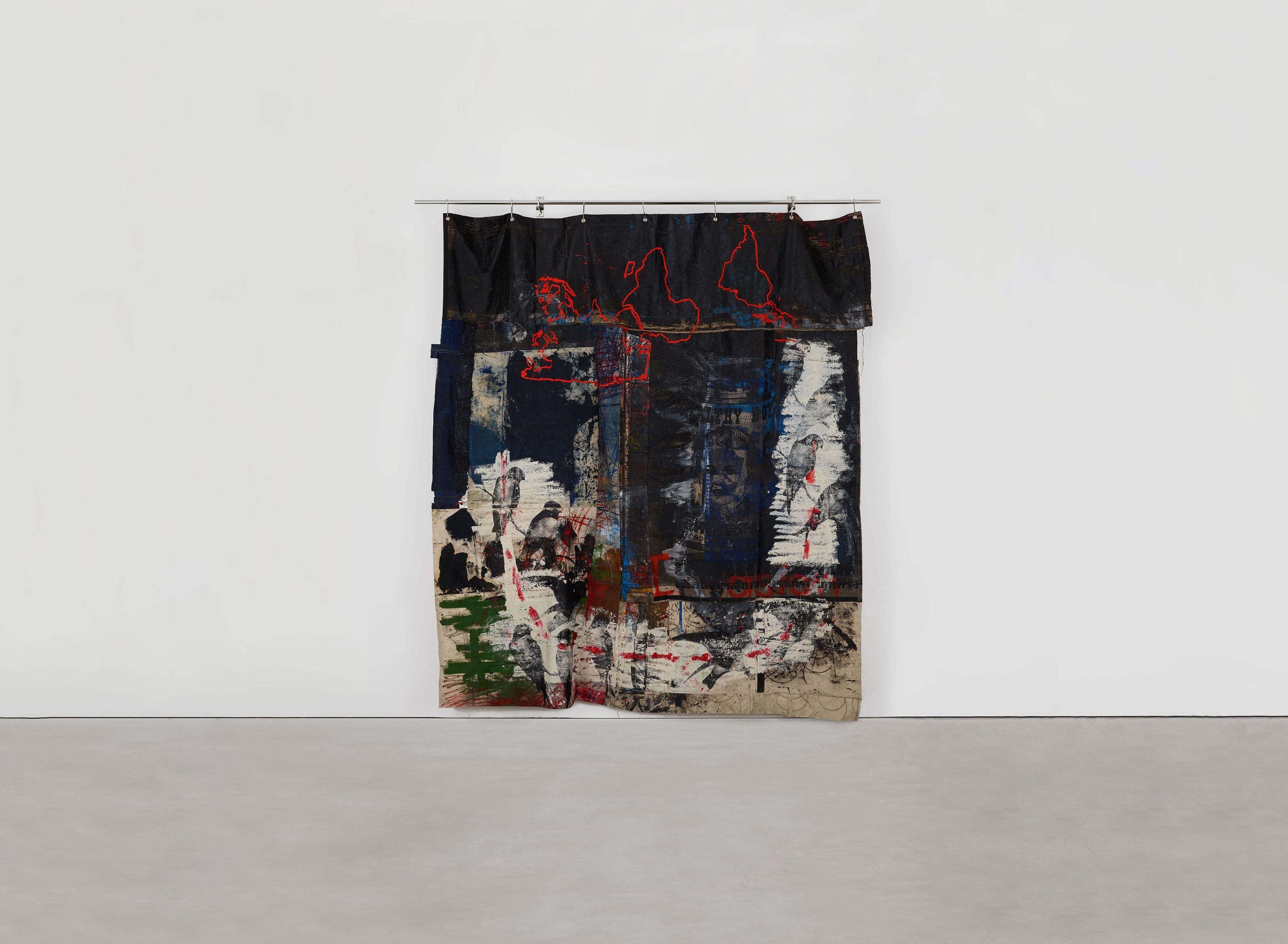Kettle's Yard, Cambridge
April 2019
April 9–June 23, 2019
Central to this major solo exhibition by Oscar Murillo was the first public presentation of a new painting created over a period of four years, from 2014 to 2018. Titled violent amnesia and measuring almost ten feet in height, this work adapts the format of Murillo’s well-known “banner paintings,” in which an unstretched canvas dangles loosely as though it were a flag—literally and metaphorically untethered from the traditional structures of painting. While previous banner paintings adhere to a palette of almost monochromatic black layered on in abstract shapes, violent amnesia incorporates recognizable imagery, including outlines of continents and pictures of birds. For Murillo, birds, which are able to migrate freely and without restriction, make for a significant contrast to the human experience; Murillo’s recent work has also made pointed reference to air travel, with airplanes having become an important site of production for the artist—in his own words, “not just a means of travel but a sacred ‘other’ space, the aeroplane seat itself becoming a unique ‘studio’ at a remove, a non-place which is both physically confined and freed from being in any real geographical location.” The title "Violent Amnesia," applied to the exhibition as a whole, reflects the artist’s interest in collective forgetting; in the museum’s description, these works express a "precarious relationship between anxiety and inertia."
The characteristically dynamic and diverse installation at Kettle’s Yard made use not only of the galleries themselves, but also the window on Castle Street, the adjacent St. Peter’s Church, the lower floor of the Kettle’s Yard House, and the research space, as well as areas between the galleries. Among the works on view was a new group of paintings from Murillo’s "catalyst" series (ongoing since 2011), examples of which were shown at David Zwirner in London in 2015. Presented for the first time in the U.K. was My name is Belisario, an audio installation featuring the artist’s father describing his experience of migrating from Colombia to London. The original narrative in Spanish was also available for visitors to listen to in English, Bengali, Arabic, and French—all languages that are spoken in communities in Cambridge (for the presentation of this work at Jeu de Paume in Paris in 2017, this work was similarly available in languages including German and Hebrew). As the artist explains in an interview with curator Osei Bonsu, "The desire is to continue the translation process so that it somehow has an ambition for it to continue to expand and to give the opportunity for a diversity of cultures, societies to maybe be aware of this story, and in it potentially find a kind of familiarity—particularly in the context of individuals living in Europe, or coming from ‘otherness.’"
Violent Amnesia also included a performance linking the gallery spaces. This element of the exhibition used similar materials to the artist’s performance at the 10th Berlin Biennale in 2018, such as a black cape-like costume and rock-like baked sculptures. Titled through patches of wheat, corn and mud, the performance in Berlin featured industrial ovens that were used to produce loaves from a mixture of corn and clay, evoking notions of sustenance and consumption.
The exhibition at Kettle’s Yard was accompanied by public programs, including a conversation with Murillo, tours, talks, and performances.
Violent Amnesia marked the reopening of Kettle’s Yard after two years of renovation and expansion. A unique house museum with its own collection, Kettle’s Yard was founded by Jim Ede (1895–1990), who converted four cottages in Cambridge into a place to display his art collection. In 1966, Ede, who would conduct personal tours of the collection as well as lend paintings to students to hang in their rooms during semester time, donated the house and collection to the University of Cambridge.

